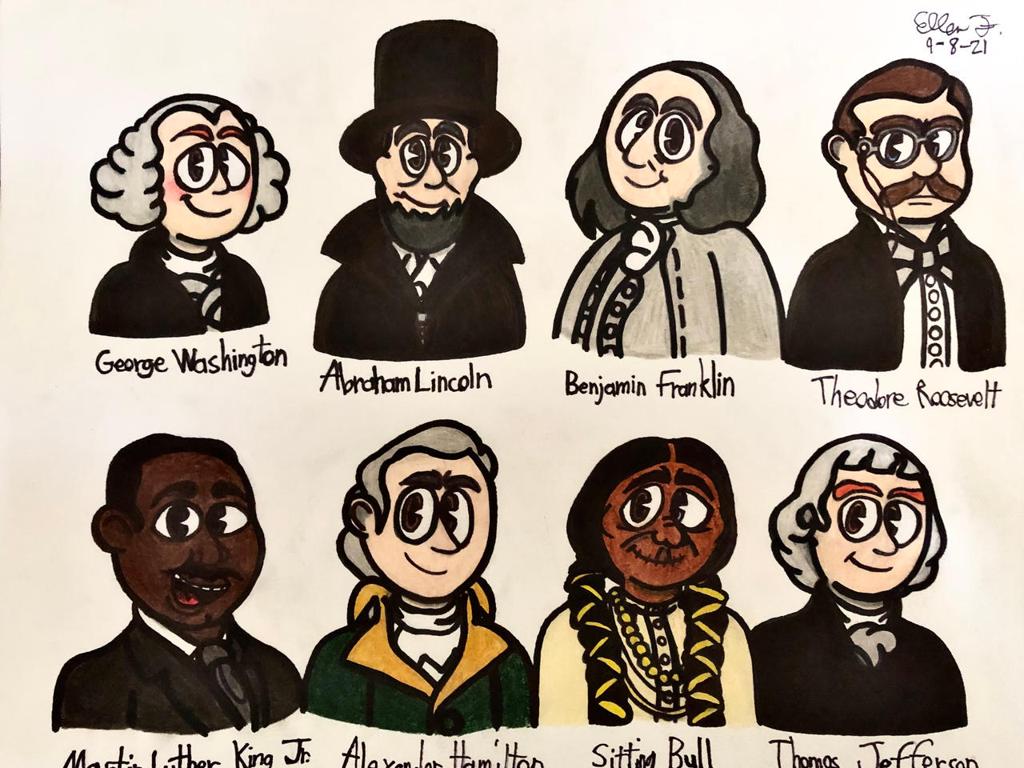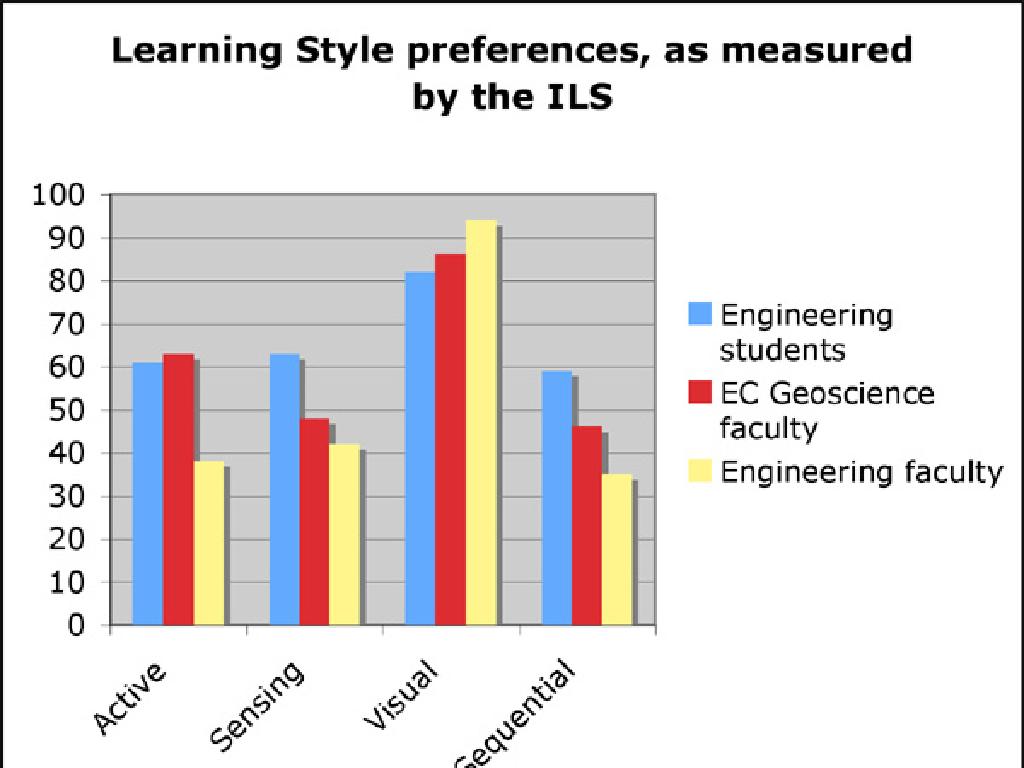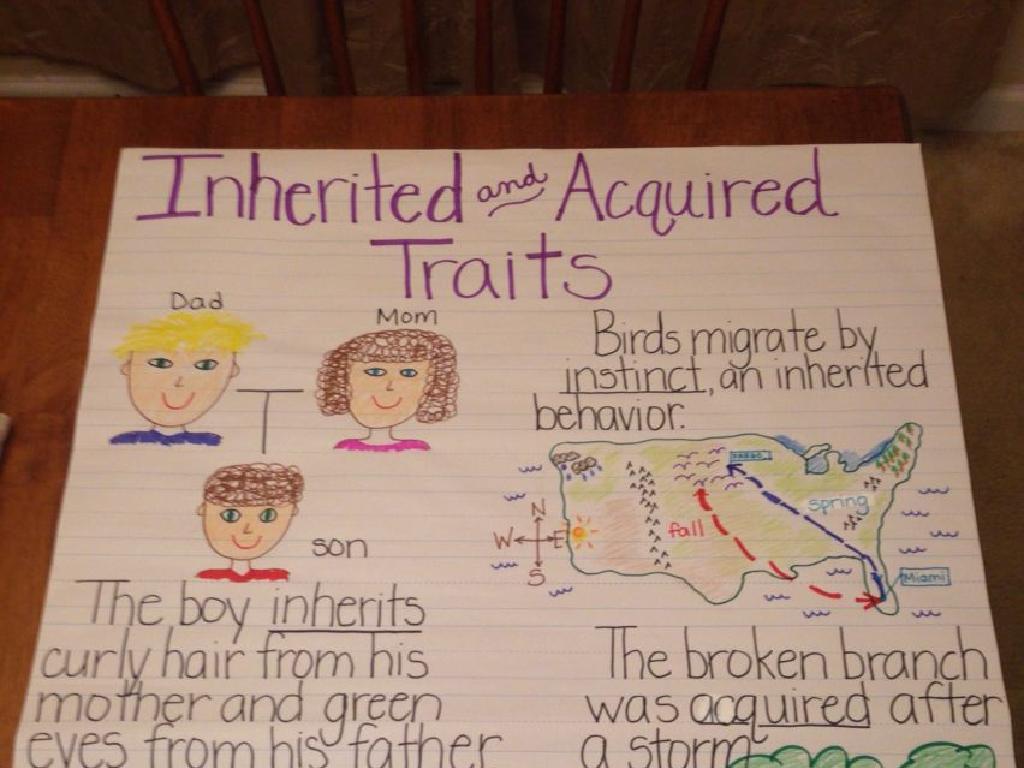Top And Bottom
Subject: Math
Grade: Pre-k
Topic: Positions
Please LOG IN to download the presentation. Access is available to registered users only.
View More Content
Exploring ‘Top and Bottom’ in Math Class
– Greet our young mathematicians
– Today’s topic: ‘Top and Bottom’
– ‘Top’ is like the head, ‘Bottom’ is like the feet
– Understanding positions is fun
– We’ll learn through games and stories
– Activity: Find ‘Top and Bottom’
– Look around to spot objects’ top and bottom
|
Welcome the children warmly to create a positive learning environment. Introduce the concept of ‘Top and Bottom’ as part of understanding positions, which is an essential spatial skill. Use simple language and relatable examples like parts of the body to explain the concept. Engage the children with interactive activities such as identifying the top and bottom of various classroom objects or using storybooks with illustrations that emphasize the concept. Encourage the children to participate and share their observations. The goal is to make the learning process enjoyable and to help them apply the concept of ‘Top and Bottom’ in their daily lives.
Exploring Positions: Top and Bottom
– Understanding positions
– Things can be top, middle, bottom
– ‘Top’ means highest point
– Example: Top shelf of a bookcase
– ‘Bottom’ means lowest point
– Example: Bottom drawer of a dresser
|
This slide introduces the concept of positions to Pre-K students, focusing on ‘Top’ and ‘Bottom’. Begin by explaining that positions help us describe where things are located. Use classroom objects to demonstrate the idea of top, middle, and bottom. For ‘Top’, you might point to something high like the top of a cabinet or a shelf. For ‘Bottom’, show them the lowest part of something, like the bottom of a basket or a drawer. Encourage the children to identify objects in the classroom that are at the top and bottom to reinforce the concept. Keep the explanations simple and relatable, using items they are familiar with.
Exploring Positions: The Top!
– The top is the highest place
– Look up and find the top
– When we look up, we might see the ceiling or the sky as the top.
– Point to the room’s top
– Can you find the top of your head, a tree, or a shelf?
– Understanding ‘top’ with examples
– Examples like the top of a mountain or a tall building help us understand what ‘top’ means.
|
This slide is designed to introduce Pre-K students to the concept of ‘top’ as a positional word. Start by explaining that ‘top’ refers to the very highest point of something. Encourage the children to look upwards and identify objects that are at the top of the room, such as a light fixture or the ceiling. Ask them to point to various ‘tops’ they can see from where they are, including the top of their own head, furniture, or any classroom decorations. Provide examples of ‘top’ that they can relate to, like the top of a slide at a playground or the top of a stack of blocks. This will help them grasp the concept in a tangible way. During the next class, you can have activities where they identify and label the top of various objects in the classroom or in pictures.
Exploring Top and Bottom: The Bottom!
– Bottom is the lowest place
– Like the floor or beneath your feet
– Look down to see the bottom
– Maybe it’s the ground or lower shelf
– Touch the bottom of your chair
– Feel the underside of the chair
|
This slide is aimed at helping Pre-K students understand the concept of ‘bottom’ as a position. Start by explaining that the bottom is the very lowest part of something. Encourage the children to look down towards the floor or the base of objects to visually identify the bottom. Then, ask them to physically touch the bottom of their chairs to connect the concept with a tactile experience. This activity helps in developing spatial awareness in young learners. Make sure to supervise the children to ensure safety as they bend down to touch the bottoms of their chairs.
Exploring Top and Bottom
– Find top and bottom in images
– Top of the mountain activity
– Which animal is at the mountain s peak?
– Bottom of the mountain activity
– Which animal is at the mountain s base?
– Learn to describe positions
– Understanding ‘top’ and ‘bottom’ helps us tell where things are
|
This slide is aimed at helping Pre-K students understand the concepts of ‘top’ and ‘bottom’ through visual aids. Present images of mountains with various objects or animals placed at different positions. Ask the students to identify which objects are at the top (peak) and which are at the bottom (base) of the mountain. This activity will not only help them grasp the concept of positional words but also enhance their ability to describe the location of objects in relation to one another. Encourage the children to use the terms ‘top’ and ‘bottom’ in full sentences to describe what they see in the pictures. For example, ‘The eagle is at the top of the mountain, and the bear is at the bottom.’ This will reinforce their understanding and vocabulary.
Top and Bottom in Our World
– ‘Top and Bottom’ at the playground
– Who’s on the slide’s top?
– Is it a bird, a plane, or a friend?
– Who’s at the slide’s bottom?
– Is it grass, a shoe, or a toy?
– Discuss more ‘Top and Bottom’ examples
– Trees, mountains, cups, and hats
|
This slide is aimed at helping Pre-K students recognize and understand the concepts of ‘Top and Bottom’ in everyday situations. Use the playground example to make it relatable. Ask the children to identify objects or people at the top and bottom of the slide, fostering engagement and observation skills. Then, encourage them to think of other examples where they can identify the top and bottom, such as trees (top: leaves, bottom: roots), mountains (top: peak, bottom: base), cups (top: open end, bottom: stands on), and hats (top: covers the head, bottom: brim). This will help them apply the concept of ‘Top and Bottom’ to various objects and settings in their world.
Class Activity: Top and Bottom Hunt
– Let’s explore ‘Top and Bottom’
– Find objects in the classroom
– Look for things above or below
– Decide if they’re top or bottom
– Is your object on the ceiling or floor?
– Ready, set, go find them!
|
This activity is designed to help Pre-K students understand the concepts of ‘top’ and ‘bottom’ in a fun and interactive way. Encourage the children to look around the classroom and identify objects that are located at the top of something, like a clock on the wall, and objects at the bottom, like a rug on the floor. Provide guidance and ensure safety as they move around the room. Possible activities include: 1) Finding the highest book on a bookshelf (top), 2) Identifying a toy on the ground (bottom), 3) Pointing to a picture at the top of a bulletin board, and 4) Recognizing shoes on the bottom of a cubby. This will help them associate the terms with physical positions and improve their spatial awareness.
Congratulations, Position Experts!
– Great job learning ‘Top and Bottom’
– Now you know positional words
– Use ‘Top and Bottom’ to describe object locations
– Give yourselves a big clap
– You’re position experts now!
|
This slide is a celebration of the students’ understanding of the concepts of ‘Top and Bottom.’ It’s meant to reinforce their knowledge and boost their confidence in using these positional words. Encourage the children to clap for themselves, fostering a sense of accomplishment. As a teacher, you can use this opportunity to recap the lesson by asking the students to point out objects in the classroom that are at the top or bottom of other objects. This will help solidify their understanding in a fun and interactive way.





